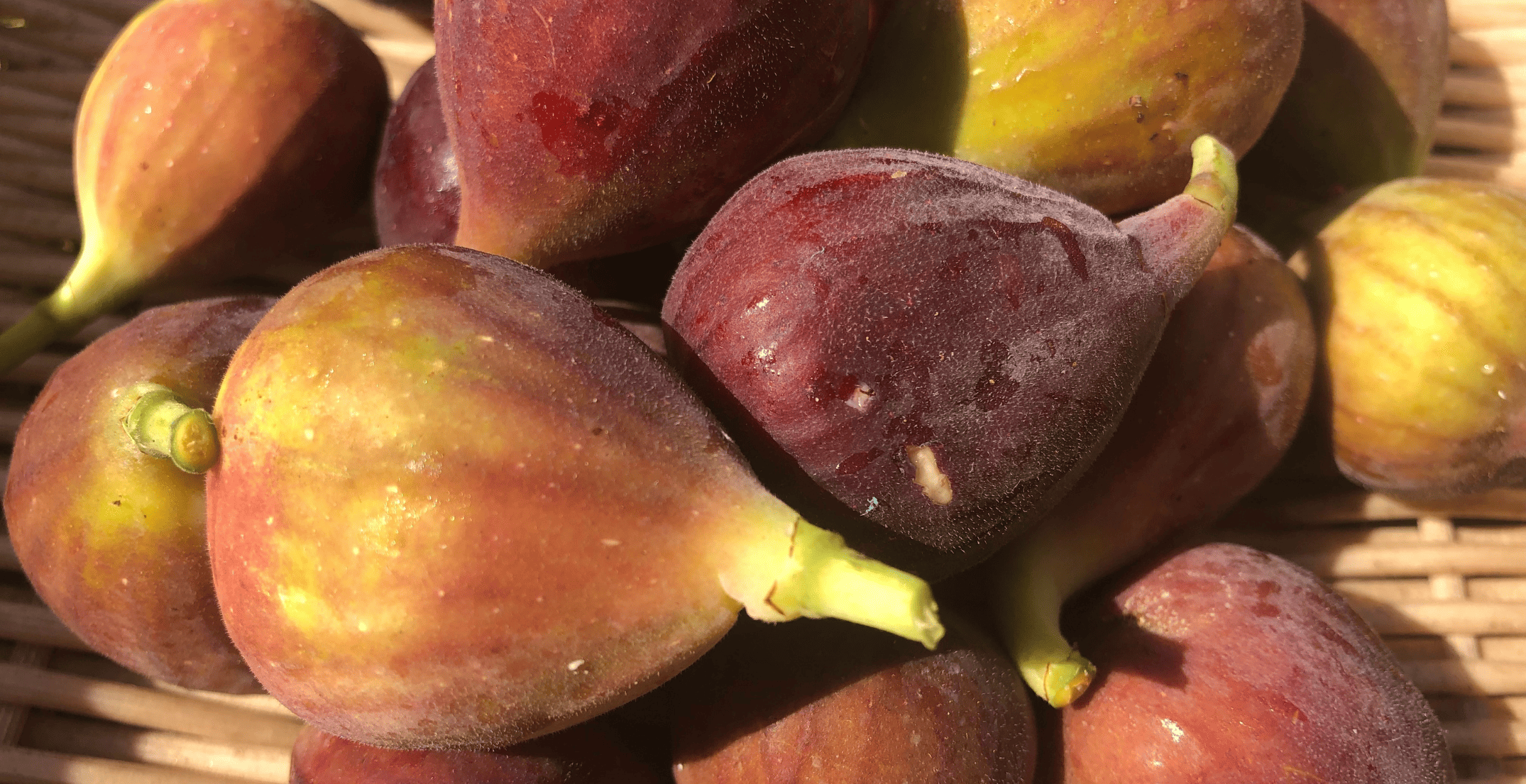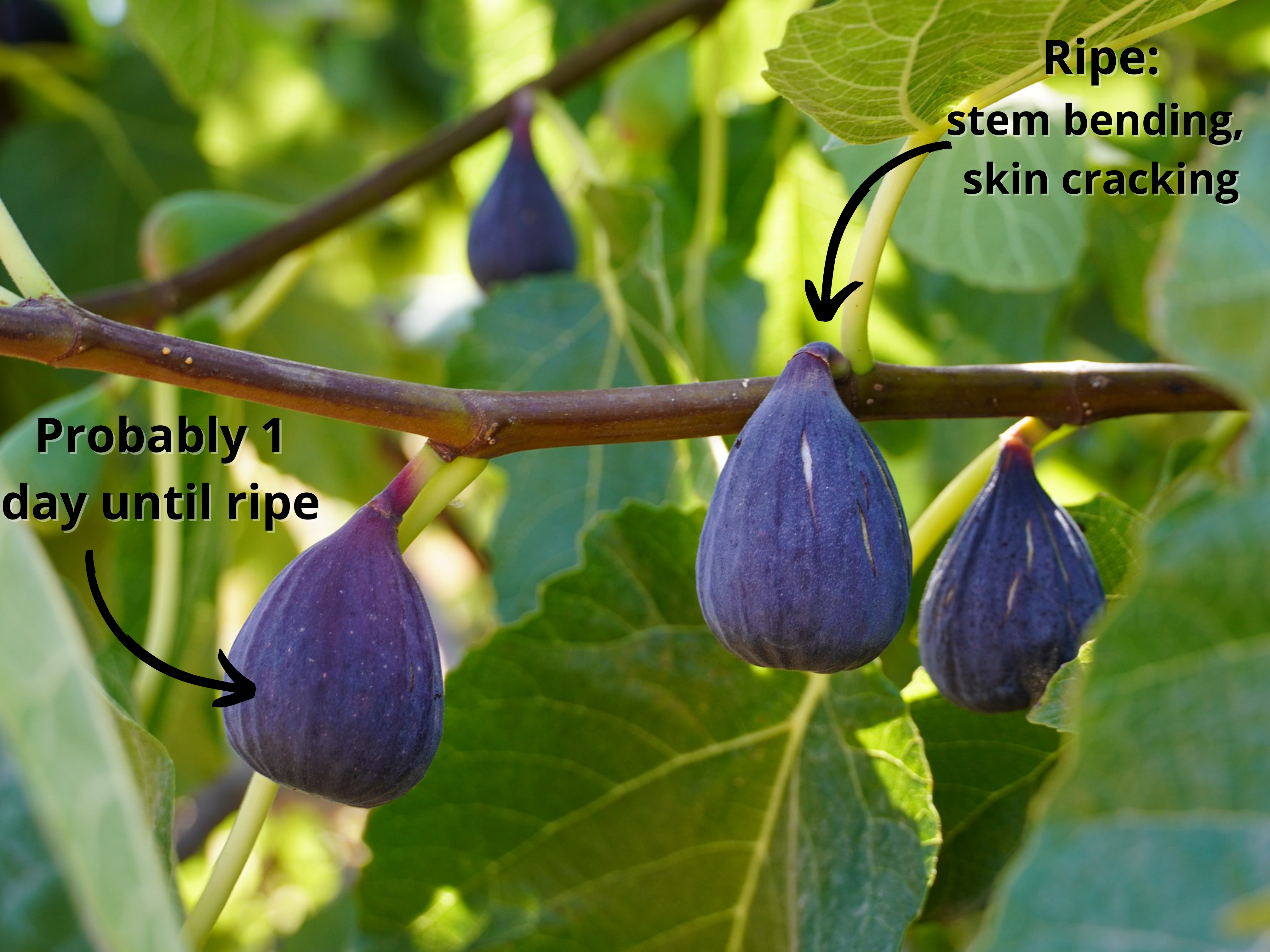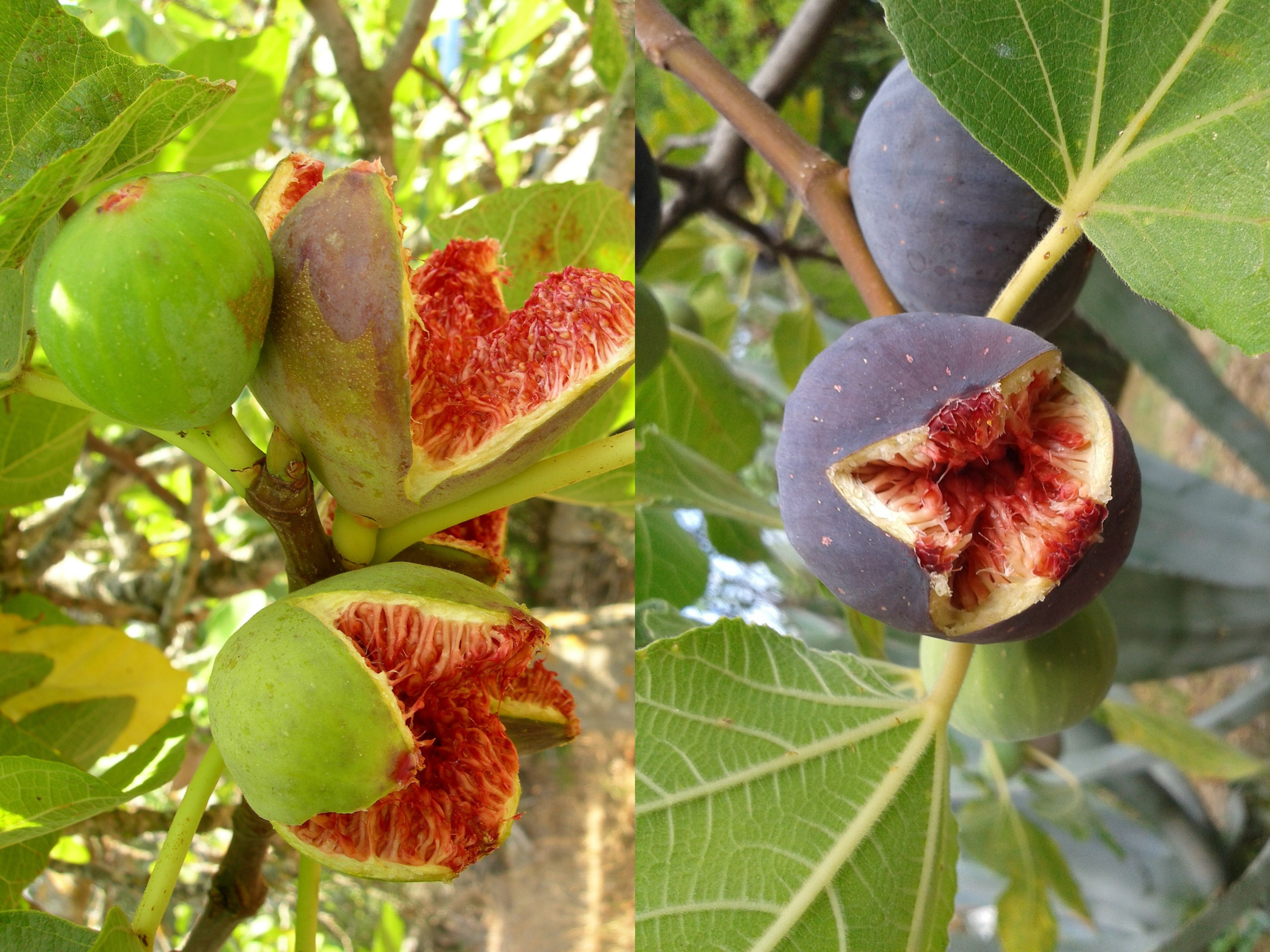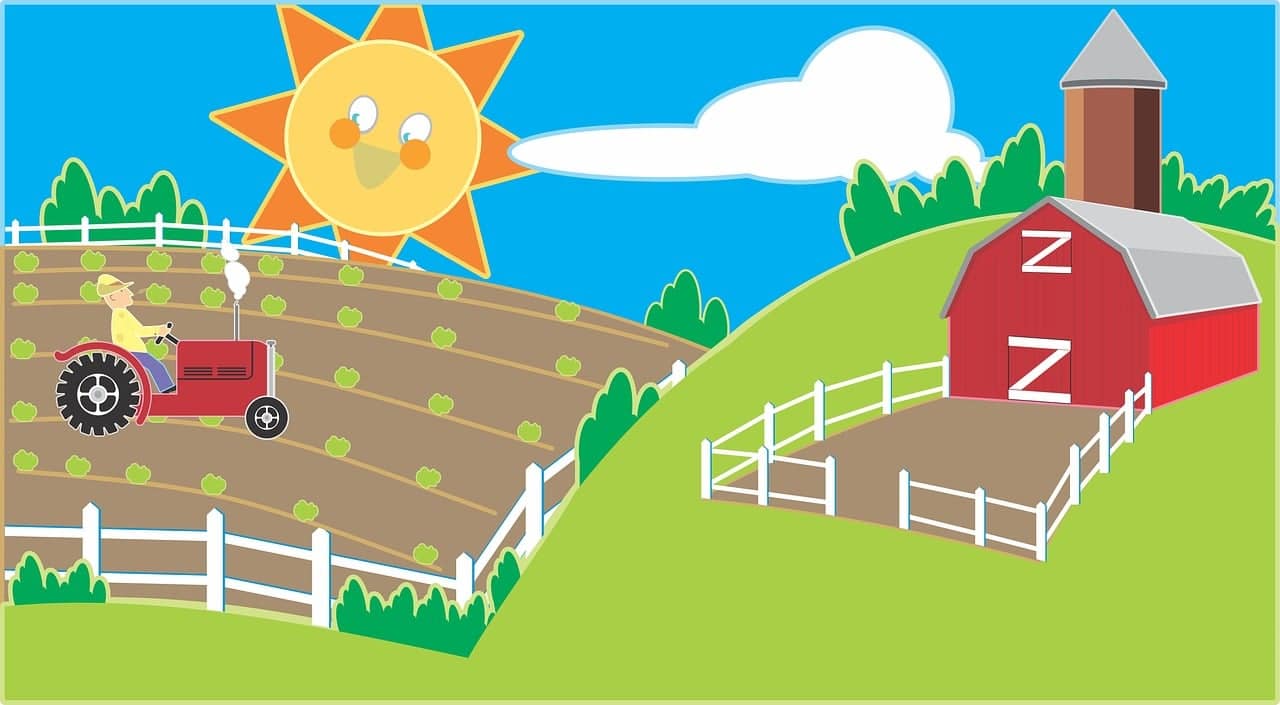This post may contain affiliate links. Probably doesn’t, but it might. It doesn’t cost you anything extra but if you use these links to buy something, we may earn a commission.
With all the energy put into growing our fig trees, especially for those of us who have to deal with winter, it’s easy to overlook that critical point of harvest.
Figs are trickier than most fruits because they do not continue to mature after they are plucked off the tree. That means they have to be picked when fully ripe. Otherwise, you miss out on the maximum sweetness and juiciness that we love about figs.

It’s important to remember that figs take about 90 days to ripen from their first appearance on the branches until they are ready to harvest. That means you look at them for a long, long time before they are ready.
There are three indictors for you to observe that tell you when your figs are ready for harvest.
The first signs that the fig is ripening will be that the fig seems to swell to twice its usual size and it lightens from a green to a light green or is almost white. From here, the fig will continue into its final color.
Keep in mind that there are many different colors for mature figs, so the final color varies depending on which variety you have. So-called white figs such as, Kadota, are actually a light green, so there is less color variation from the unripe fig to the ripe one, but there still are differences. The others, which can be light or dark brown, maroon or black, will have a greater contrast between unripe green and the mature color.

The second sign will be how the fig is on the tree. An unripe fig sticks out from the stem and will be above the leaf that it is next to. A ripe fig looks as if it is drooping, and it will hang below the stem that it is next to. The stem is softer and bends downward.
The third sign is the fig will feel soft to the touch. Gently press the sides of the fig. If it is soft like a pillow, then you can harvest. Use your fingers to break the stem off and do your best to handle the fig by the stem only. A ripe fig’s skin is very tender and will scrape easily.
Your figs can stay on the tree for several days in this slightly soft stage, and will progressively get softer. How quickly or how slowly will depend on how hot it is.

What to look out for: rain, ants, birds!
If your figs are at the first stage of softness and a rainstorm is headed your way, you probably want to go harvest your figs. Rain will cause the figs to split open. You can still harvest split figs, but they will not keep at all. Use immediately. Split figs also attract ants, because of the sweetness of the fig.
Birds can be a nuisance with figs if there are feeding stations close by. Mainly the birds are attracted to the figs for the water content. If birds are attacking your figs, you can try setting up a water bath elsewhere or covering your fig tree with bird netting or row cover.

Once you harvest your figs, plan to eat them within a few days. Keep them refrigerated, otherwise they deteriorate quickly.
I love cutting the figs in half and adding to a salad, if I don’t just eat them up. If you want an elegant appetizer that’s easy, try baked figs with feta cheese.
Ingredients: figs, goat feta cheese, salt, pepper, fresh herbs like rosemary or thyme, olive oil.
Use a baking dish. Cut your figs in half, add a slice of feta, sprinkle with salt, pepper, and herbs. If you have extra cheese, you can arrange the figs around the feta. Drizzle with olive oil. Bake at 400 for 15 minutes, until cheese is softened. If you want to brown the cheese, put under the broiler for 1 minute.
Looking to grow your own figs? Your best bet is to find a nursery local to you to get a fig tree best suited to your growing area. Even better if they grow their own fig trees. Every year we sell a few plants that we propagated from cuttings we took of our fig trees. It can be hard to find fig plants locally though, and you may need to order online. Companies like Burnt Ridge Nursery, Stark Bros, Gurney’s, and Willis Orchards will carry a range of fig varieties. Make sure you pick one that will do well in your growing zone and look carefully at their shipping policies so that your fig plant isn’t shipped in blazing heat or bitter cold.
If this has been helpful, check out our courses. Growing something in the garden is good for you! We share how we grow on the farm in these courses.
Sign up below for our weekly email for insider notes on fruits and vegetables, flowers, and farming.
About Highland Orchards: Completely surrounded by suburbia, our small farm has been growing beyond expectations since 1832 in this location.
Growing a wide variety of fruits, vegetables, and flowers, Highland Orchards provides true “farm fresh” for the community all year. If you want to shake the hand of the farmer who grows for you, here is the farm! With plants in the ground or under cover in tunnels, we grow for every season. A family farm, we have three different generations involved in running the farm right now.
Come see us to eat fresh, eat local, and eat well!
Happy growing and happy eating!
~Ruth
About Ruth: I am the 6th generation of my family to farm here at Highland Orchards in Delaware. I grew up here, learning from my grandparents and parents how to plant, weed, harvest, and store fruits, vegetables, and flowers. My graduate degree is in history, so I love to research anything and everything. I have taught at all levels, including university and continuing education. I have done everything on the farm from planting to harvest to selling to social media. I love that I can share knowledge with people through blogs and courses.





